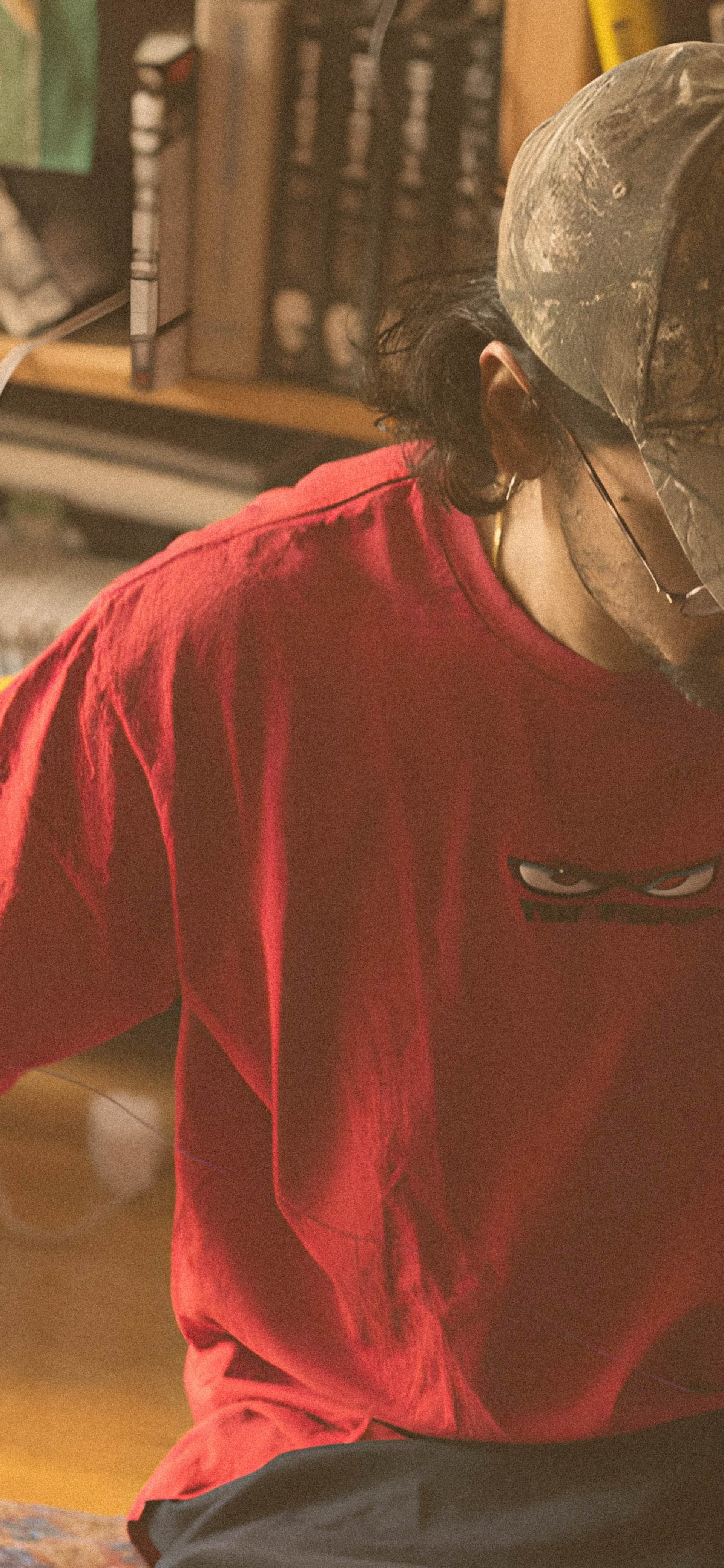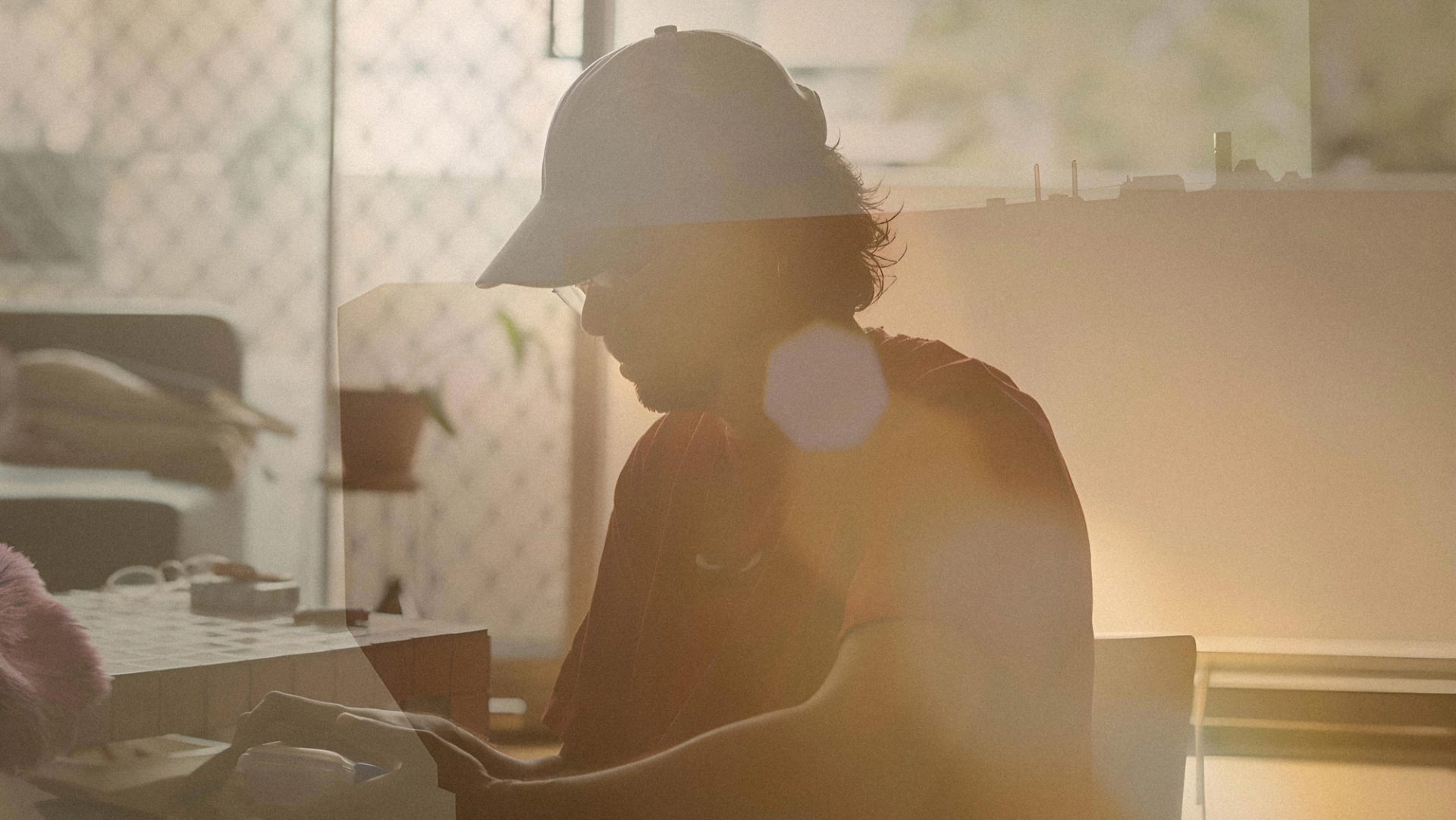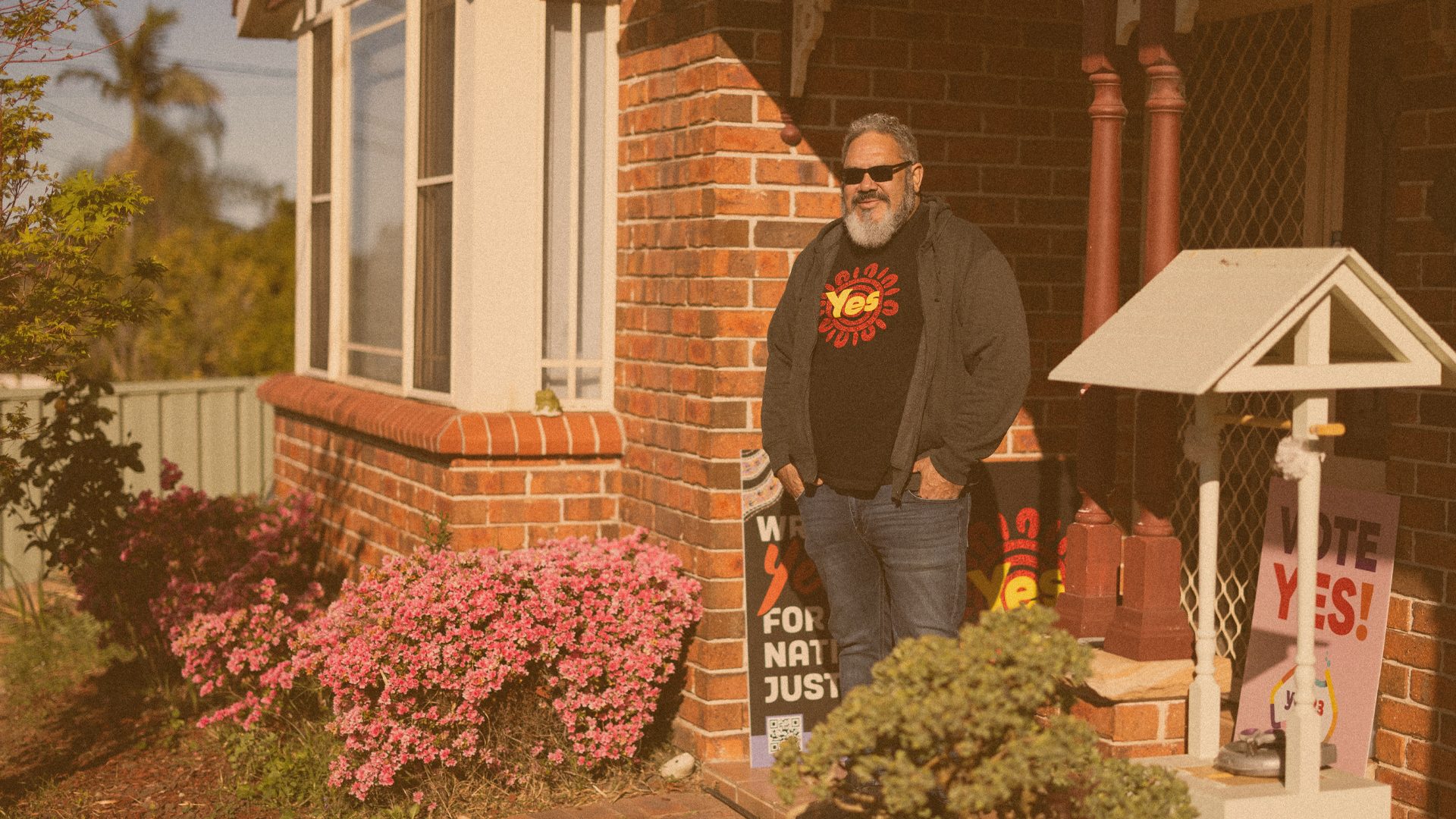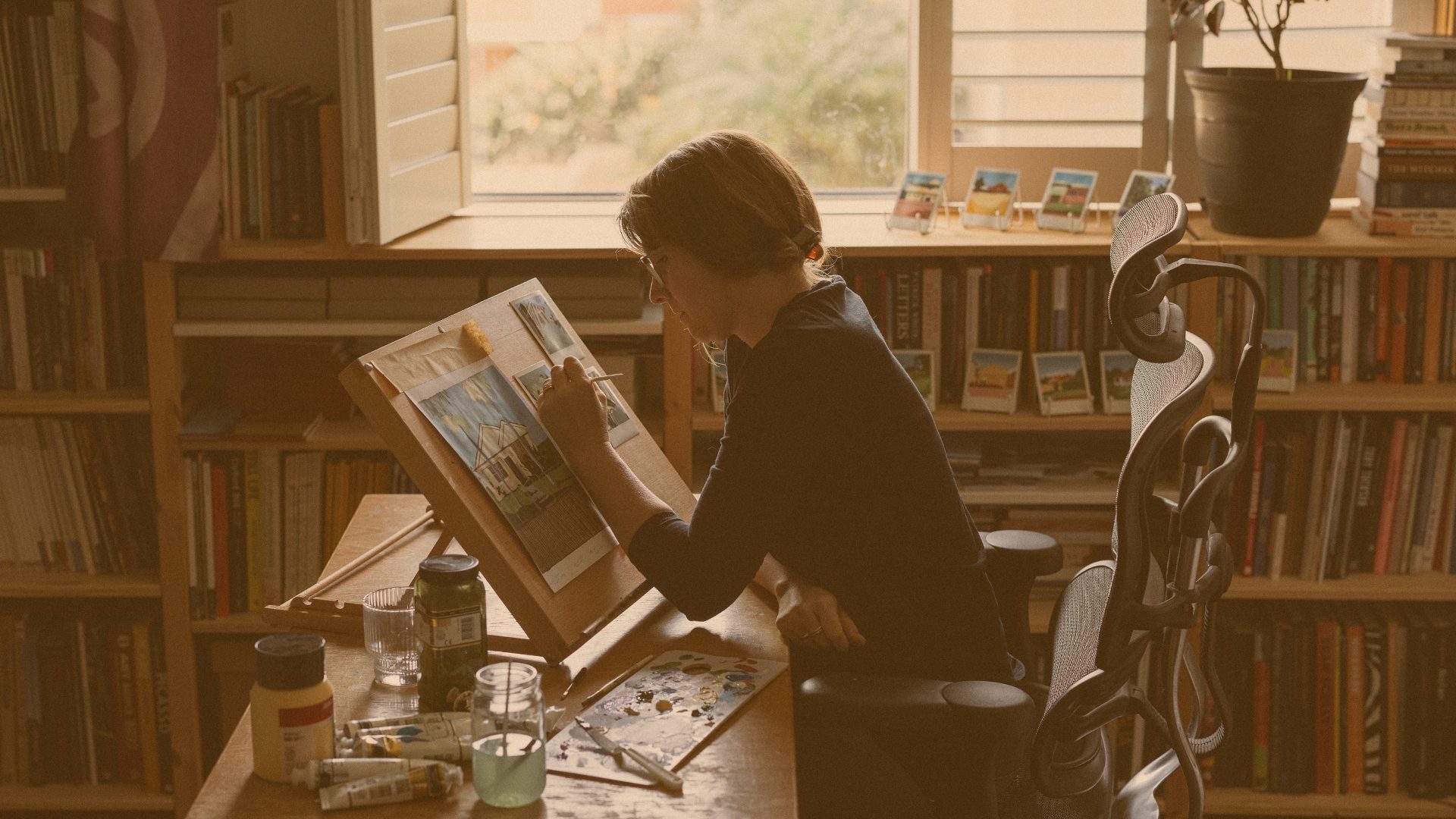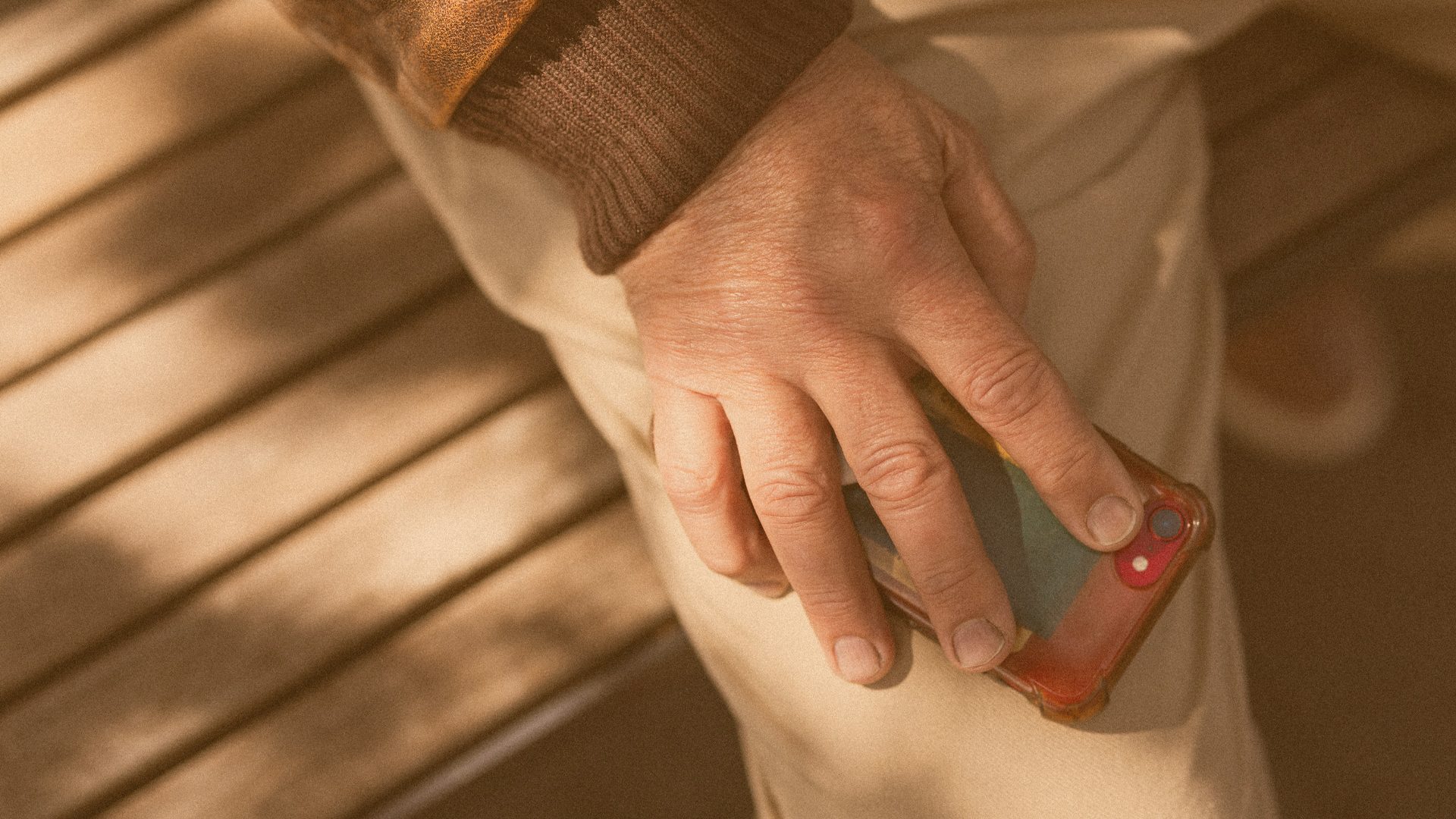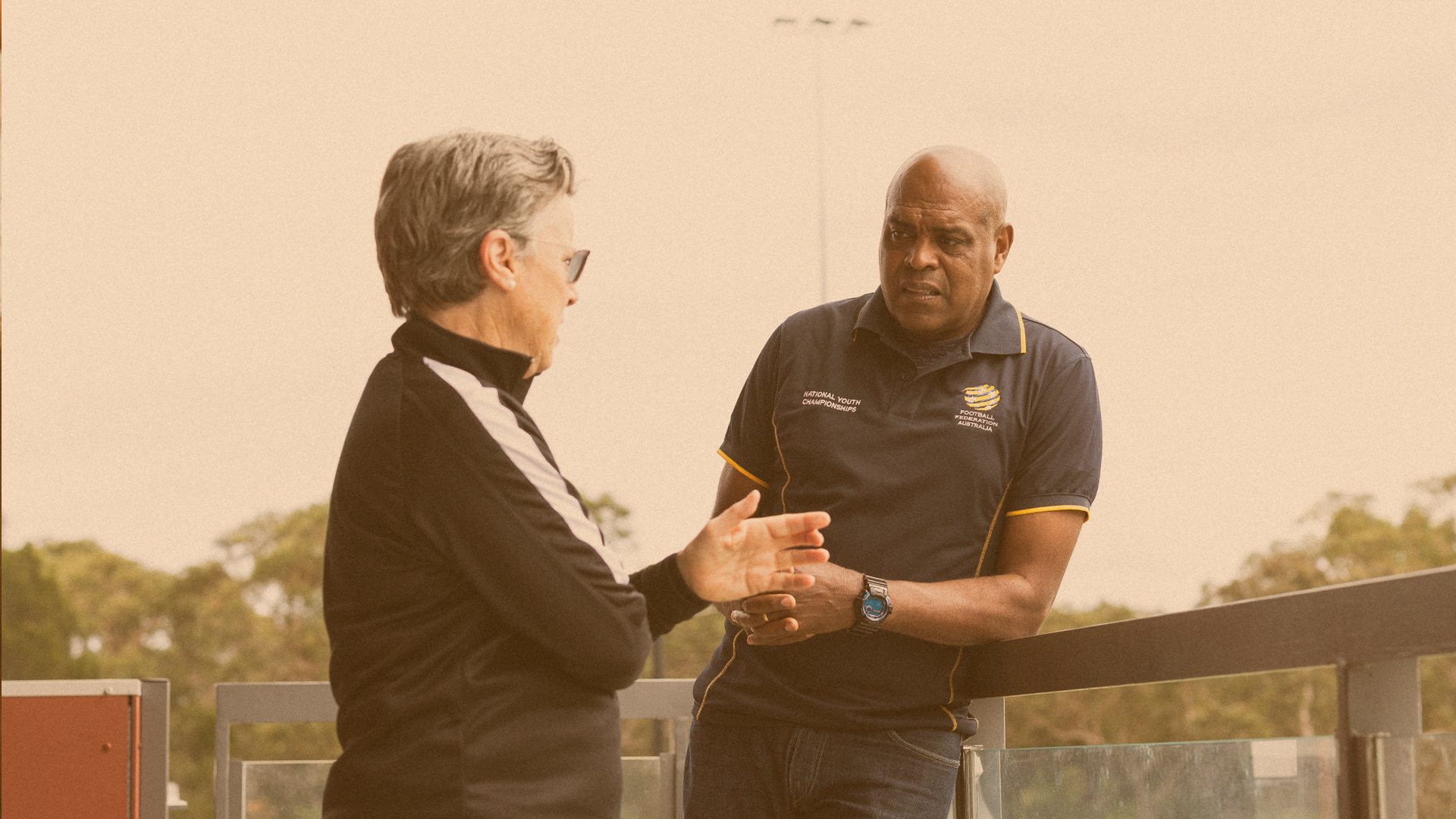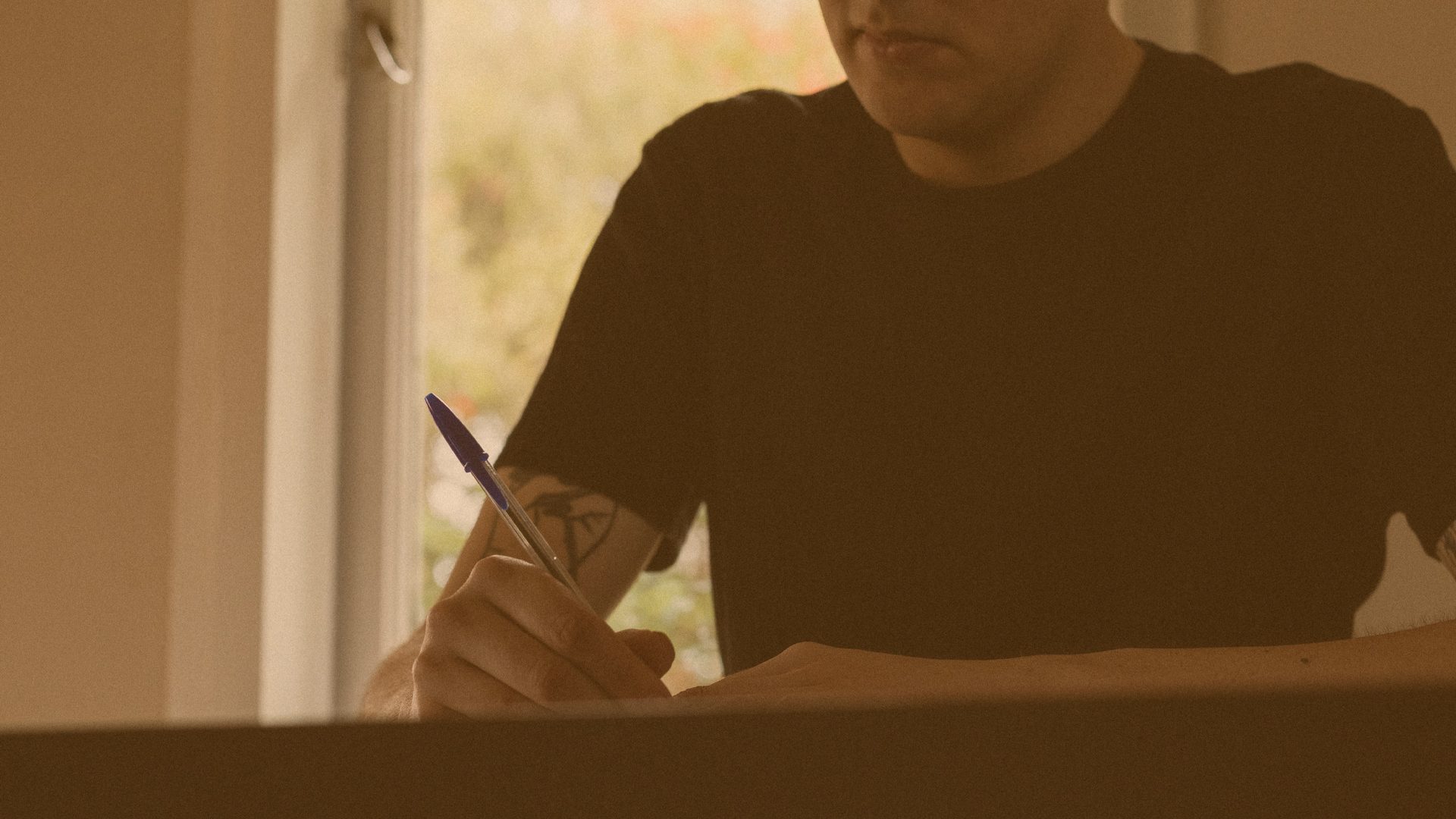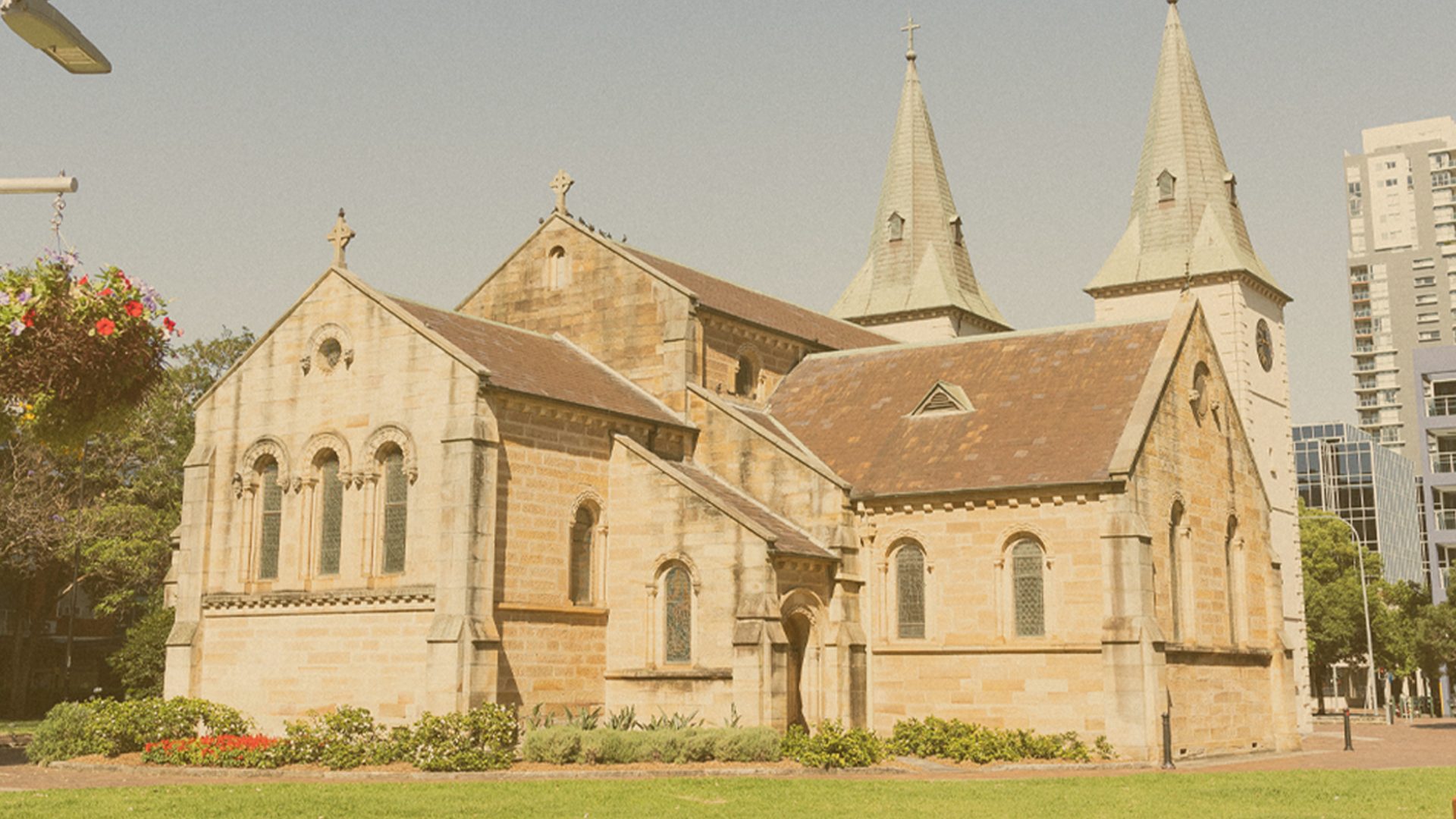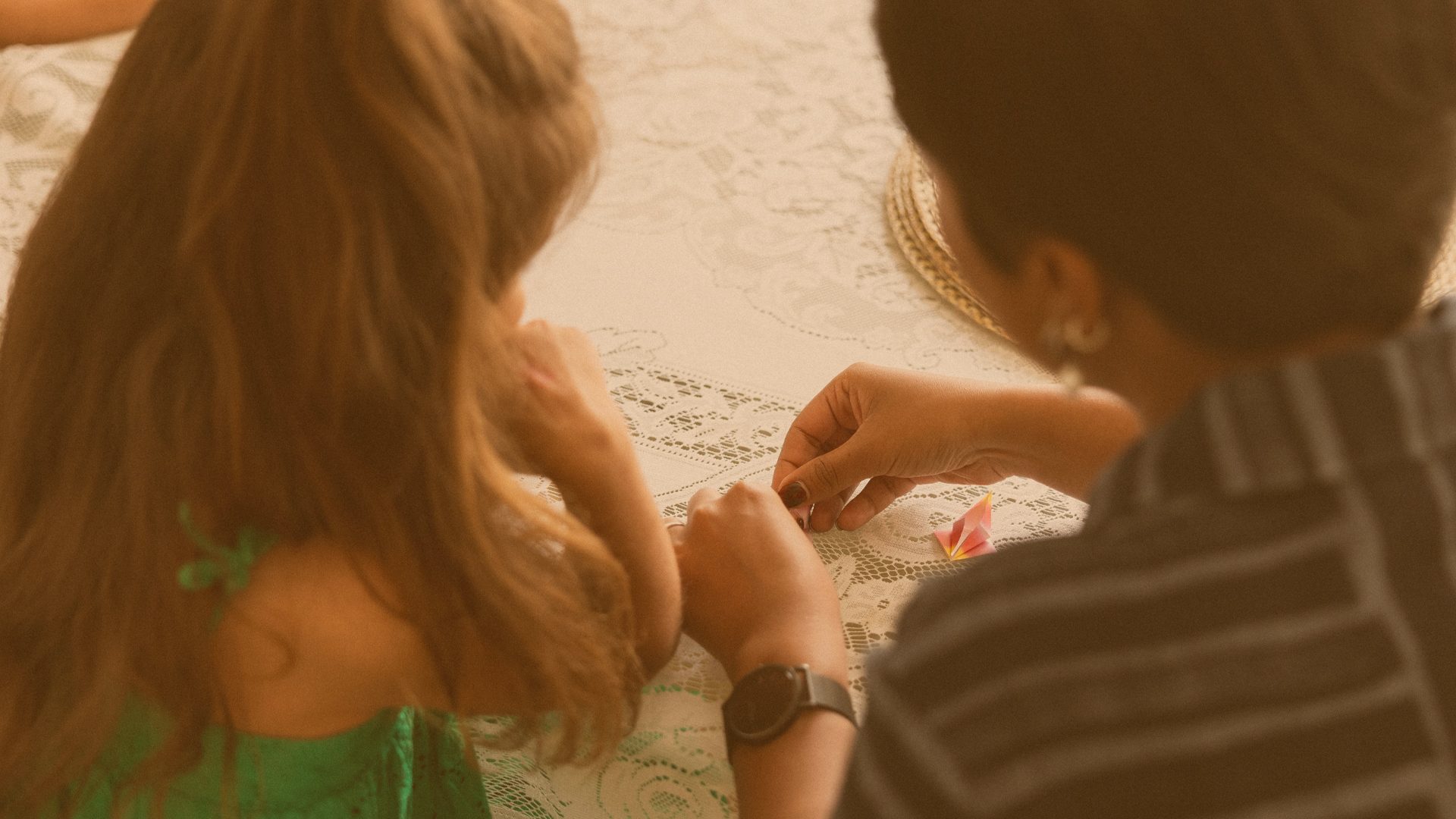Crafting consciousness

One of the founders of Pari, Kalanjay Dhir is part of a new generation of creatives in Western Sydney
I visit Kalanjay Dhir’s central Parramatta apartment on a grey and muggy January day out in Dharug country, finding myself a little uncertain of how our meeting will play out. I’ve come to chat about his artistic output, much of which has something of a DIY aesthetic and plays with the idea art isn’t something to be held in institutions for only the elite but rather something that should be in proximity to the everyday world.
The artist has a spirited personality: whether embodying a live-action version of a playable character, like in his three-part video Stream (2021) or battling evil alongside his GUILD bandmates as rapper Uncle Kal, his persona veritably crackles with a heightened sense of play.
I need not have been worried: Kal greets me with smiling eyes, and I soon learn he is easy-going and happy to chat. When I mention I’m apprehensive about how to cover his extensive – and highly varied – body of work, he tells me to feel free to take the interview in whichever direction it wants to go. ‘Sometimes I wish I was more enigmatic,’ he says, laughing at the complexities of presenting oneself to the public eye.
After the welcome, I’m put further at ease by the liminal presence of Taju, a vibrant Jim Henson-style alien puppet with pink-purple fur, crafted by Kal in collaboration with his mother, Sri Wiranti Dhir, for his work a perfect storm (2023). Taju watches us from the windowsill with his three large black button eyes as we settle into couches to background sounds of Parramatta construction clattering surreptitiously through the apartment’s windows.
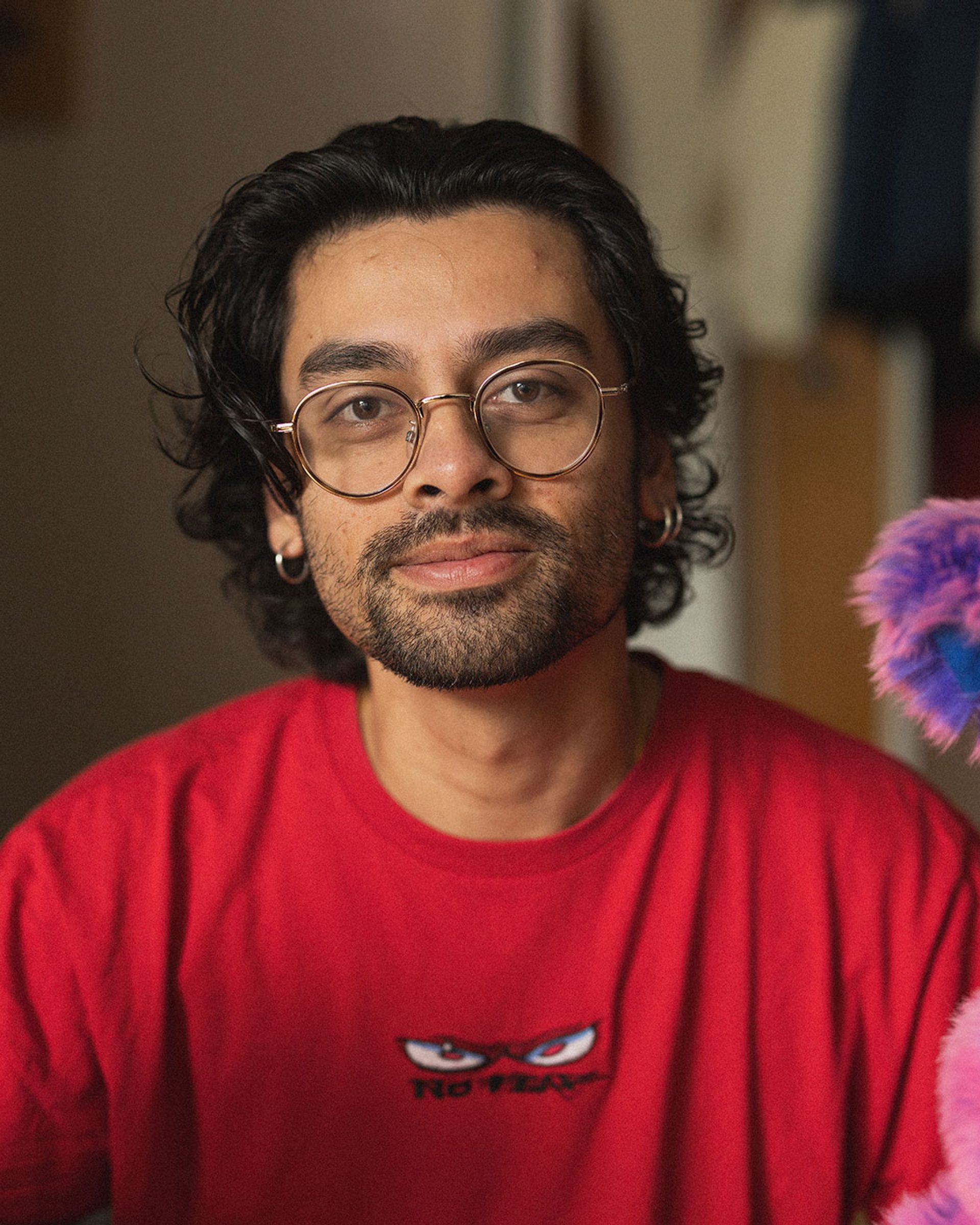
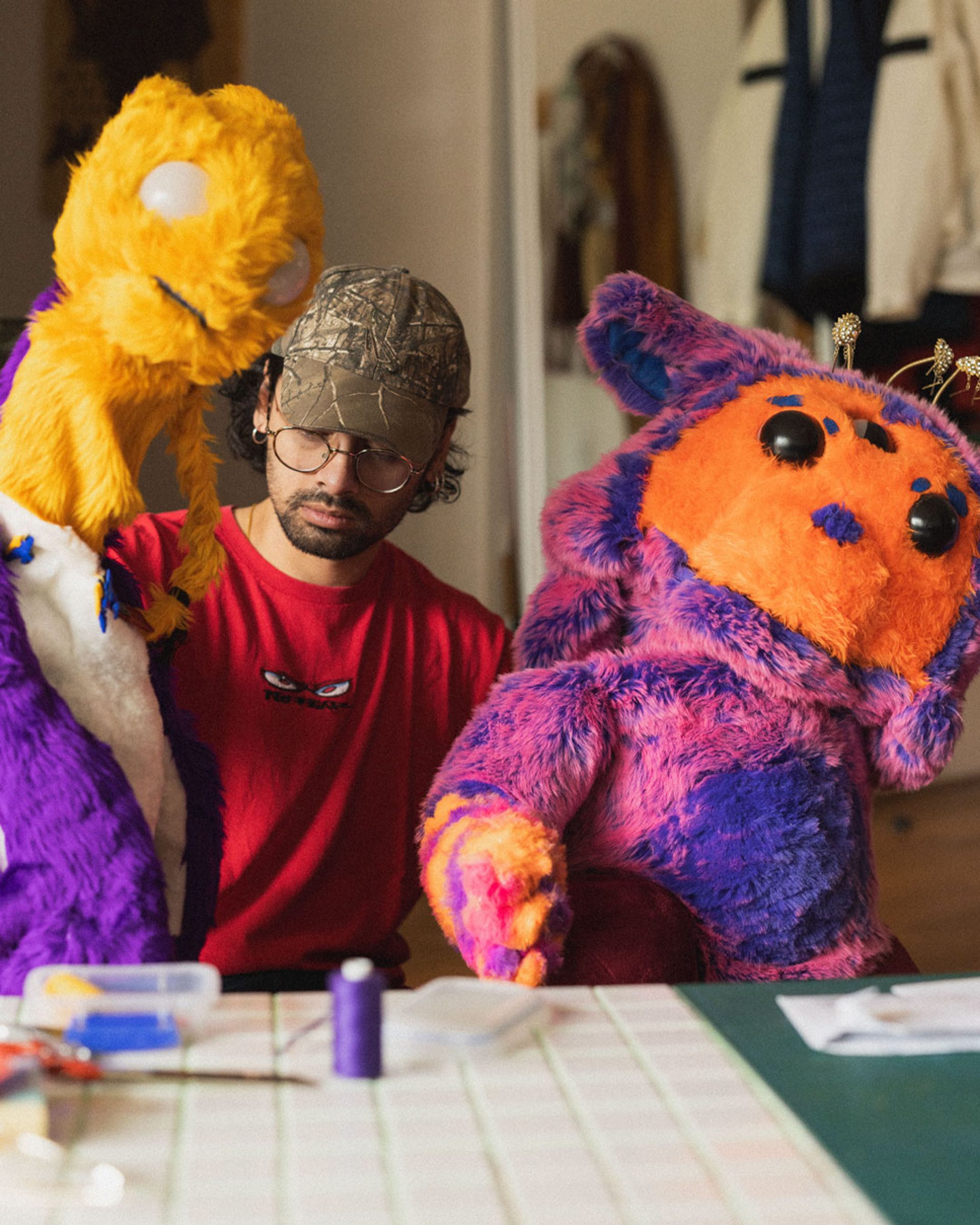
Kal honed his craft as a sculptor at Parramatta Artist Studios (PAS), where he commenced his practice after graduating from university at age 21. He feels lucky for this entry to the Sydney art world and acknowledges the hard work of people who came before him and opened doors for emerging artists like himself.
‘It's funny, because when I started, Western Sydney was so different,’ he muses, noting he might be one of the first of the generation that benefited from being based in Western Sydney.
‘Historically, it's been under-resourced,’ he says. ‘It's a working-class area, a lot of new migrants, a lot of complicated histories in the West. Very populated as well, very hot, no infrastructure.’
PAS provided a community of creatives and immersed him in the evolving ecology of the Sydney art world. As a recent graduate, suddenly he was sharing a studio with artists such as Emma Fielden, Garry Trinh, Khadim Ali, Marikit Santiago and many others — creatives at vastly different stages of their artistic careers as well as life experience.
‘I'm exposed to different practices of people of different ages, different attitudes to art … and you know, you're all sitting together and eating like a báhn mì or something. That's crazy.’
Many of the people he met during this time ‒ including Bec Gallo, Tian Zhang and Justine Youssef ‒ would go on to work alongside him in the development of PARI, an artist-run initiative established in Parramatta in 2019 with the aim to encourage the growth of the arts within the emerging city.
‘There was a hole to fill,’ he says of the Western Sydney arts scene at the time. ‘Whereas in the City of Sydney or the Inner West there was already a lot of support, and in Melbourne there were so many kinds of emerging platforms.’ But he’s quick to add there is still much to be done: ‘PAS is a great program … but there's a lot of artists in Western Sydney, and there's no art school anymore.’
When I ask what it’s like being in ‘the scene’ as an artist and rapper from ‘out West’ he jokes: ‘I probably rode it a bit too hard,’ citing a mild concern of being ‘pigeonholed’.
He laughs again, hinting at the complexity of the organic human beyond the public persona. We are all enigmas in the end.
There is an abundance of local flavour in Kal’s work. His 2020 piece, Immersion: Parra River Patch, speaks of the complexities of personal and social relationships to a body of water which has meant very different things to different groups of people over its many millennia of contact with the human form. And yet, when looking through Kal’s work, I can’t help but feel an overbearing sense of a more globalised ‒ dare I say cosmic? ‒ perspective.
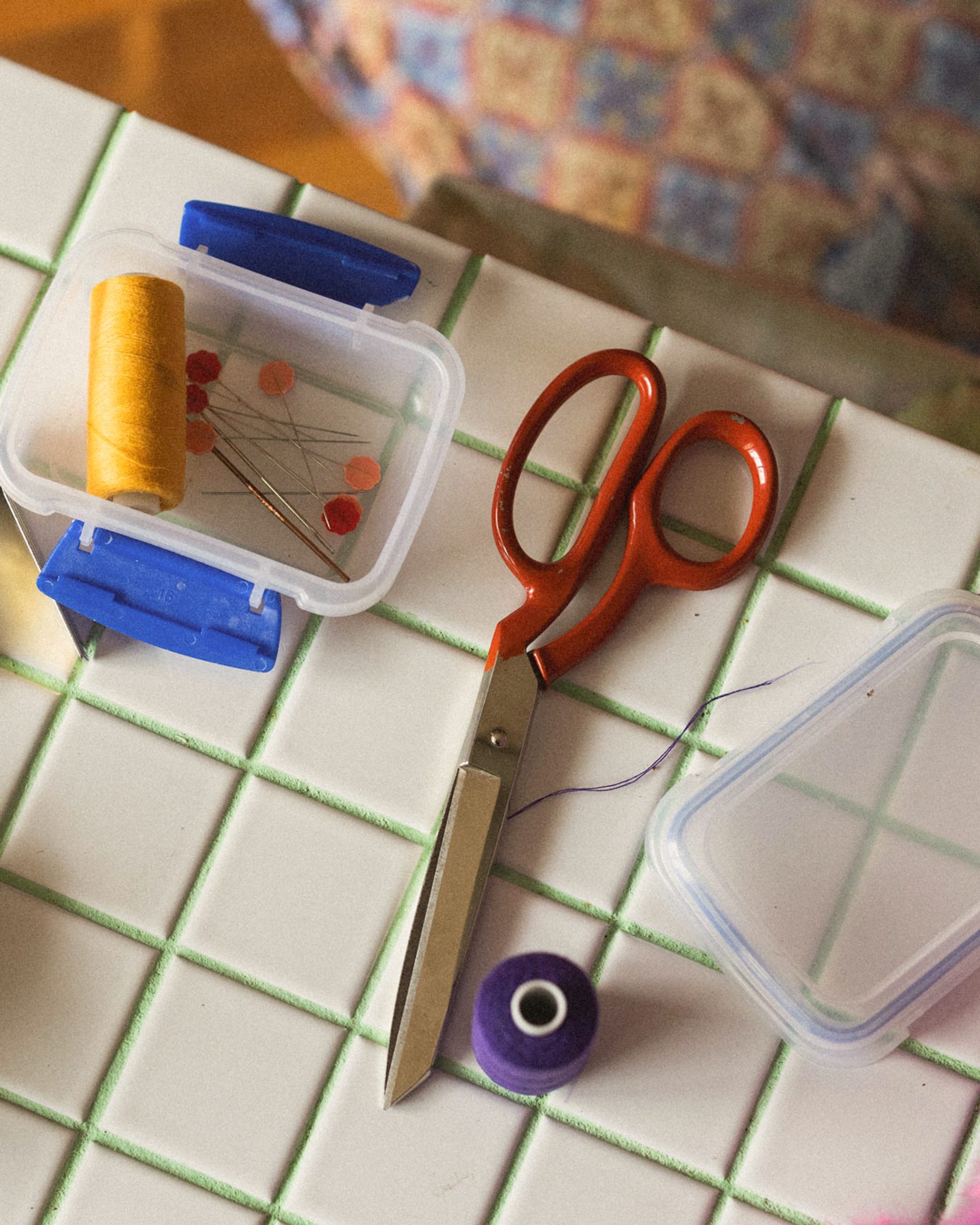
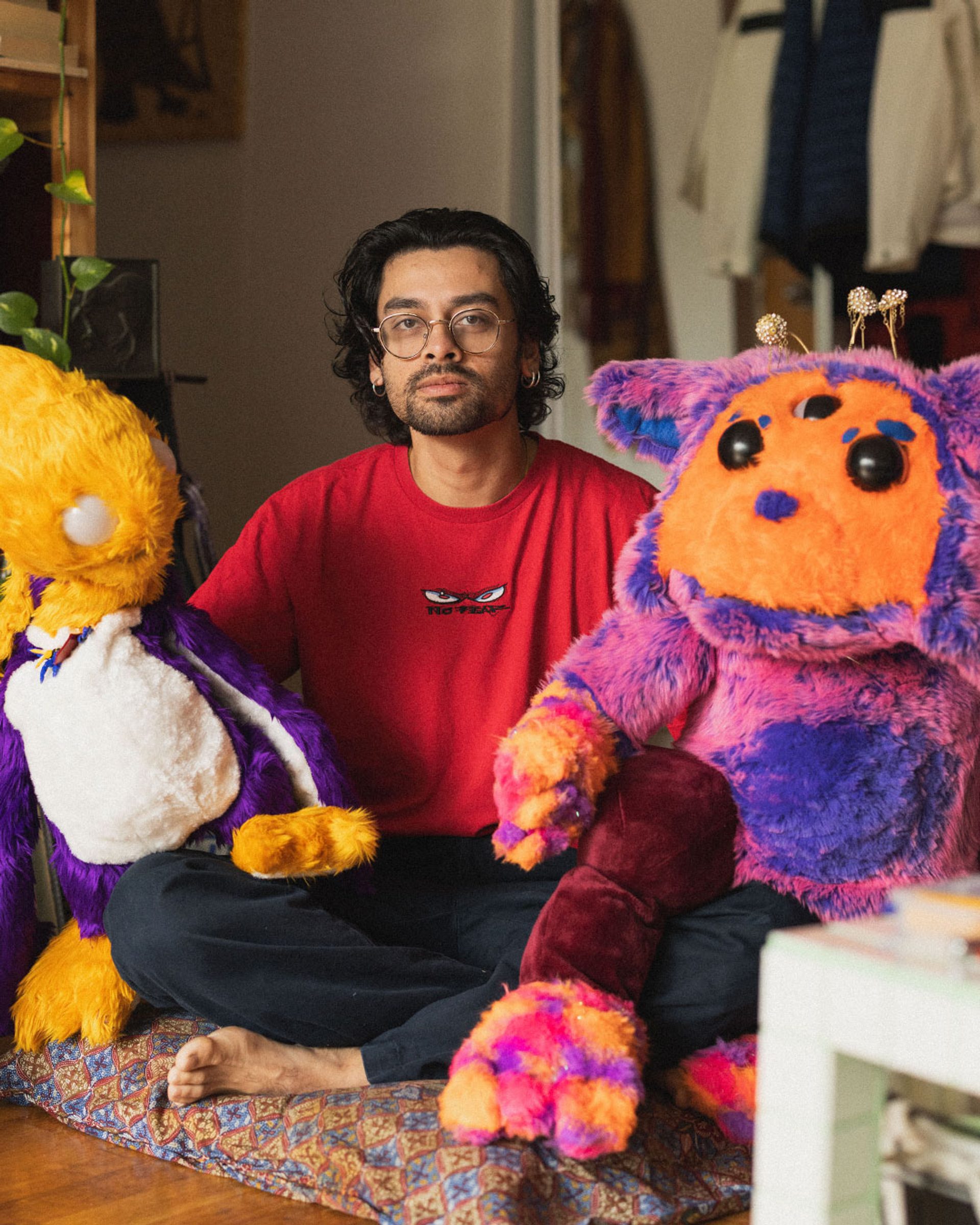
Browsing his portfolio, I’m drawn to his intermixing of iconography ‒ from the aesthetics of game design and digital renderings, to found object assemblages which reimagine consumer branding and technological processes, to more traditional forms of sculpture and modelling ‒ all of which is laced with spiritual imagery and writings describing cosmic orders of divinities and demons alike.
In part he believes this is due to his upbringing in a Hindu family. ‘I'm still quite Hindu,’ he adds, with an uncertain laugh. ‘This is becoming more of a complicated relationship,’ he offers as answer to my unvoiced question. ‘As politics in India change, the diaspora in the West changes as well.’
His 2019 solo exhibition entitled Matahari ‒ which in Indonesian translates to ‘eye of the day’, a reverential term for the sun ‒ featured a hexagonal golden one-way mirror as tribute to the James Webb Space Telescope (JWST). ‘It feels like a kind of secular spirituality,’ Kal says when I ask him about his interest in the JWST. ‘We're looking back in time to see our origins. But it's not tied to religion, not tied to business, not tied to any of that. It's something like a 'scientific' spirituality.’
The exhibition, which also included floral arrangements and sweet potatoes carved into the form of locational pins, played out like a prayer expressed through the interplay of objects and ideas. Matahari also honoured our sun, the axial point of our solar system, from whose glorious presence and immersive light our eyes have only begun to stray. Kal maps out his train of thought and inspiration via a series of written and illustrated notes in his artist’s statement: ‘What is a personal device?’ he asks. His answer:
A little satellite blooming past the Oort cloud
Unfolding sexual organ aroused by light!
We are a light-based peoples.
Who will step in our nectar?
Kal’s trajectory has recently progressed towards the idea of consciousness perceiving itself, and a view of intelligence that thinks outside the human. ‘Human thinking is still very important,’ he adds. ‘It's something that's emphasised in my religion a lot … Spirituality, I think, is at its core a questioning of “What is this reality?” And then trying to find answers or find contentment with whatever you find or don't find.’
He refers to questions his father has drilled into him since he was a boy: ‘“What is consciousness and why are we conscious?” I think that’s a key thing that has always been a question in the back of my practice.’
A progression into puppetry in recent years emerged from the idea of 'avatars', a term derived from Hindu traditions but popularised in the West in recent decades in the context of video gaming characters.
In Sanskrit अवतार (avatar) translates to 'descent' or 'come down', describing God’s manifestation in human or animal form.
‘There's a magical thing that happens when I start using the puppet … that makes people stop looking at me and start looking at the puppet, as if it has come to life,’ Kal says.
To demonstrate, he grabs Taju from the windowsill while he talks. My eyes become fixed on the beguiling alien creature as its head bobs and weaves, as if in some deep contemplation of my human form, my very existence bared to a presence I had not seriously considered since I was a child.
The morning has turned to early afternoon and I begin to worry again, this time about how I’m going to condense so many big ideas into something concise. But I’m feeling inspired from the opportunity to sit down and get to know Kal, even if only briefly. His attentive and energetic presence is infectious and has left me contemplating the sacred possibilities of the imaginary.
As our conversation concludes, Kal senses I’m hungry and raids his pantry, offering me a salted caramel protein bar, which I gladly accept, before I bid him (and Taju) adieu and head out the door, ready to get back on the M4 to head home, my head swimming in mystery.
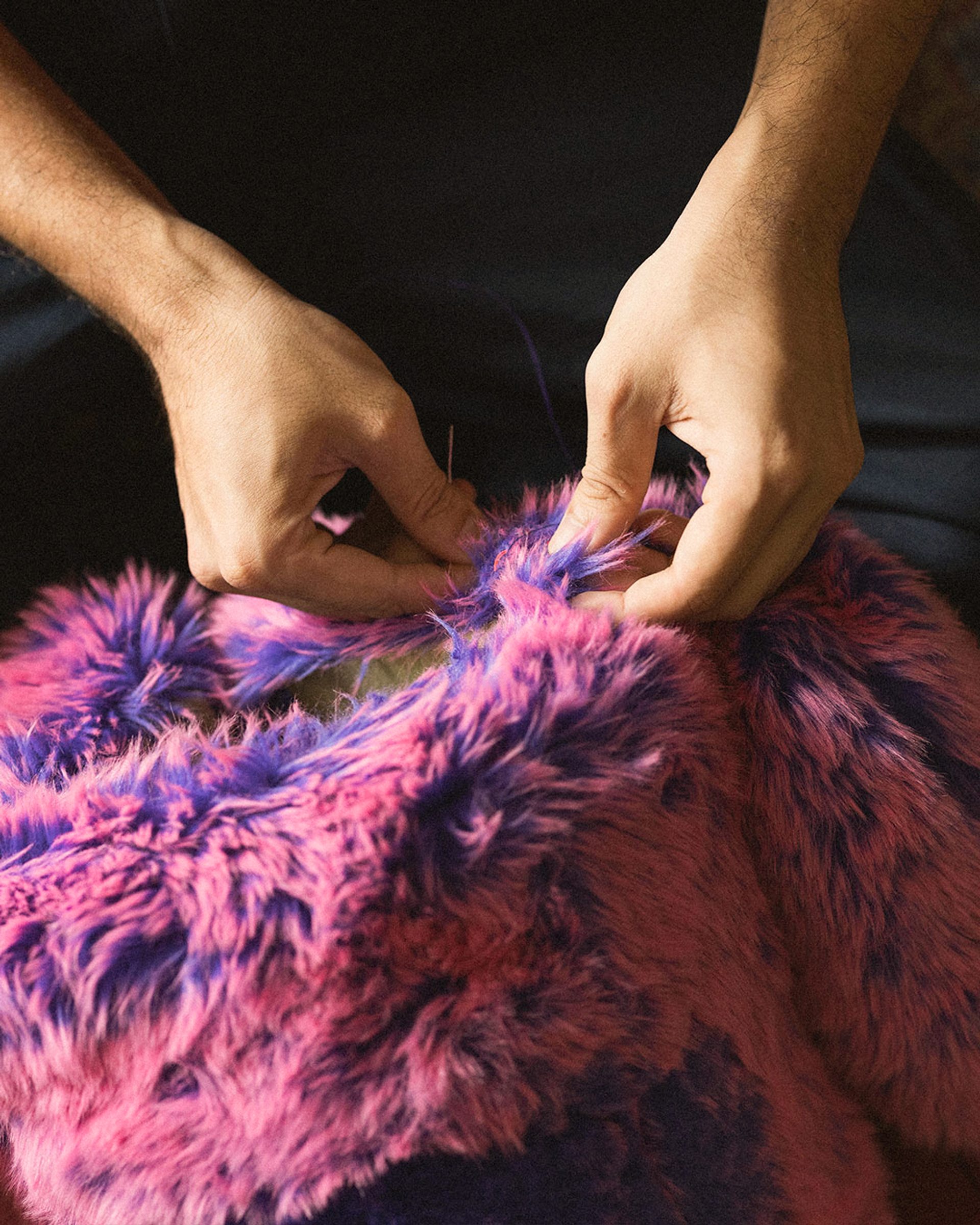
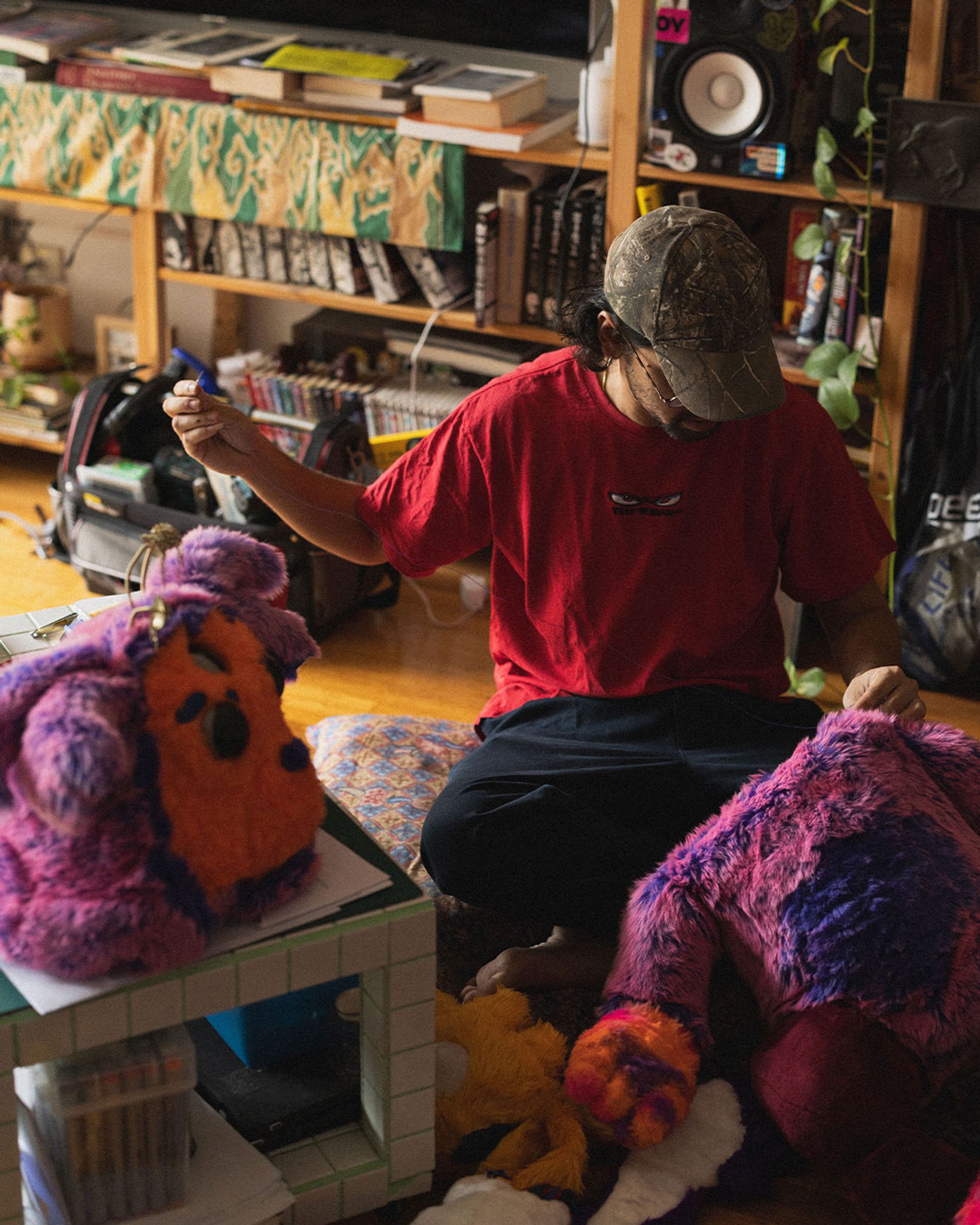
About the Author
Jonathan Payne is a writer and researcher living and studying on unceded Dharawal land, whose work focuses on the overlays and interstices of dream, identity and altered states of consciousness within narrative. Payne’s writing has appeared in Borderlands: Texas Poetry Review, Antithesis Journal and Anti-Heroin Chic. He is currently enrolled in the Master of Research program at Western Sydney University.
About the Series
Parramatta Profiles is a writing and photographic series that profiles individuals across Parramatta communities. Drawing on art, music, religion, activism and sport, each snapshot captures life in this dynamic city. A collaboration between Powerhouse and the Writing and Society Research Centre, Western Sydney University, this project supports the development of student writers by providing an opportunity to work with professional editors and be published by Powerhouse online.













